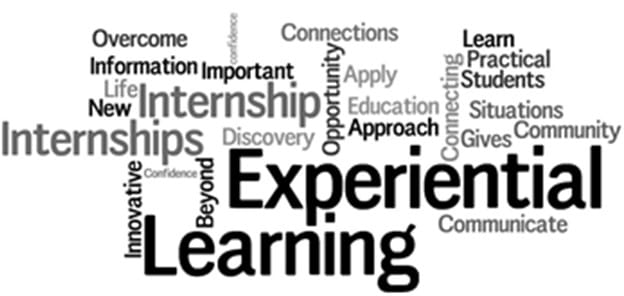Office of the Provost–Division of Faculty Success
Trinity Hall 106, 800 Greek Row Dr., Box 19128
The University of Texas at Arlington
Arlington, TX 76019
Phone: 817-272-7464 | Email: CRTLE@uta.edu
Experiential Learning
“Experiential education, which takes students into the community, helps students both to bridge classroom study and life in the world and to transform inert knowledge into knowledge-in-use.”
- Janet Eyler, AAC&U-
What are the Components of Experiential Learning?
- Reflection
- Critical analysis and synthesis
- Opportunities for students to take initiative
- Make decisions
- Be accountable for the results
What are the Benefits of Experiential Learning?
- Increases student motivation to learn
- Produces more autonomous learners
- Reflection deepens learning and helps students to transfer their previous knowledge to new contexts and master new concepts
- Internships and work experience become more meaningful
- Most transferable and marketable skills are developed in “real world” settings
- Provide students with opportunities to explore research and other scholarly activities early on in their academic career
What are some examples of Experiential Learning?
Your Role as Faculty is to…
- Select suitable experiences
- Facilitate the learning process by posing problems, setting boundaries, and supporting learners with suitable resources and ensuring safety
- Recognize and encourage spontaneous opportunities for learning, engagement with challenging situations, and discovery of solutions
- Help the learner notice the connections between one context and another, between theory and the experience
Experiential Learning at UTA
- To learn more about Maverick Advantage, the experiential learning experience at UTA, visit:
https://www.uta.edu/student-affairs/maverick-advantage
More Resources
- https://facultyinnovate.utexas.edu/instructional-strategies/experiential-learning
- https://www.aacu.org/publications-research/periodicals/power-experiential-education
- https://www.bu.edu/ctl/guides/experiential-learning/
